When US Airways Flight 1939 touched down at Philadelphia International Airport (PHL) on 17 October 2015, a storied chapter of American aviation history came to a poignant close.
The symbolically numbered flight – chosen to commemorate the year the airline was founded – marked the last revenue flight for a pioneering airline that had evolved from a meager airmail carrier in the Ohio Valley to a thriving international airline over a span of nearly eight decades.
From its inception as All American Aviation to its evolution into Allegheny, USAir, and ultimately US Airways, the airline’s rich history will not soon fade from memory.
US Airways’ Humble Beginnings
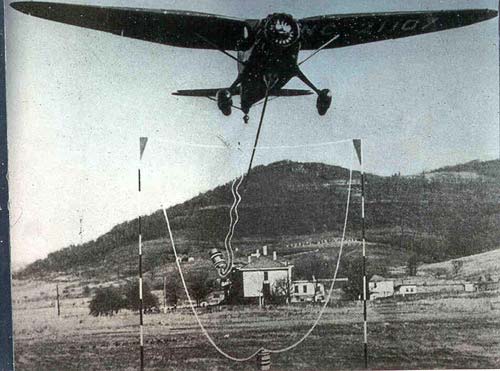
US Airways’ story began in 1939 when brothers Richard C. du Pont and Alexis Felix du Pont Jr. founded All American Aviation Company. Pittsburgh, PA-based All American Aviation began operations as an airmail carrier on 7 March 1939. The company provided mail service to cities and towns throughout the Ohio River Valley.
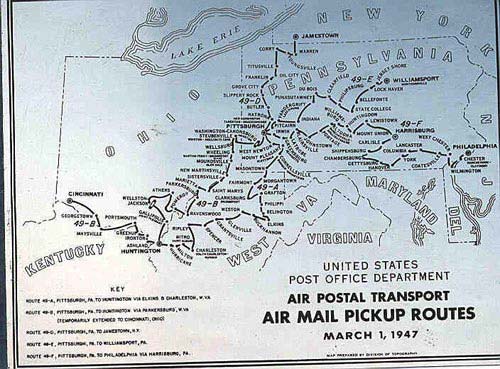
This small venture would lay the foundation for what was to come.
All American Aviation operated a small fleet of Stinson Reliant aircraft. The Reliant was a high-wing, fixed-tailwheel, single-engine monoplane that first flew in 1933.
Following the carrier’s official launch in 1939, the airline underwent several transformations in name and scope.
Transitioning from All American Aviation to All American Airways in 1949, this change coincided with the approval and introduction of passenger services. All American Airways became Allegheny Airlines in 1953, reflecting its expanded service network. Allegheny grew steadily, serving the northeastern United States from its hub at Pittsburgh International Airport (PIT) – then known as Greater Pittsburgh Airport – and establishing itself as a reliable regional carrier.
From Allegheny to USAir: Expansion and Growth
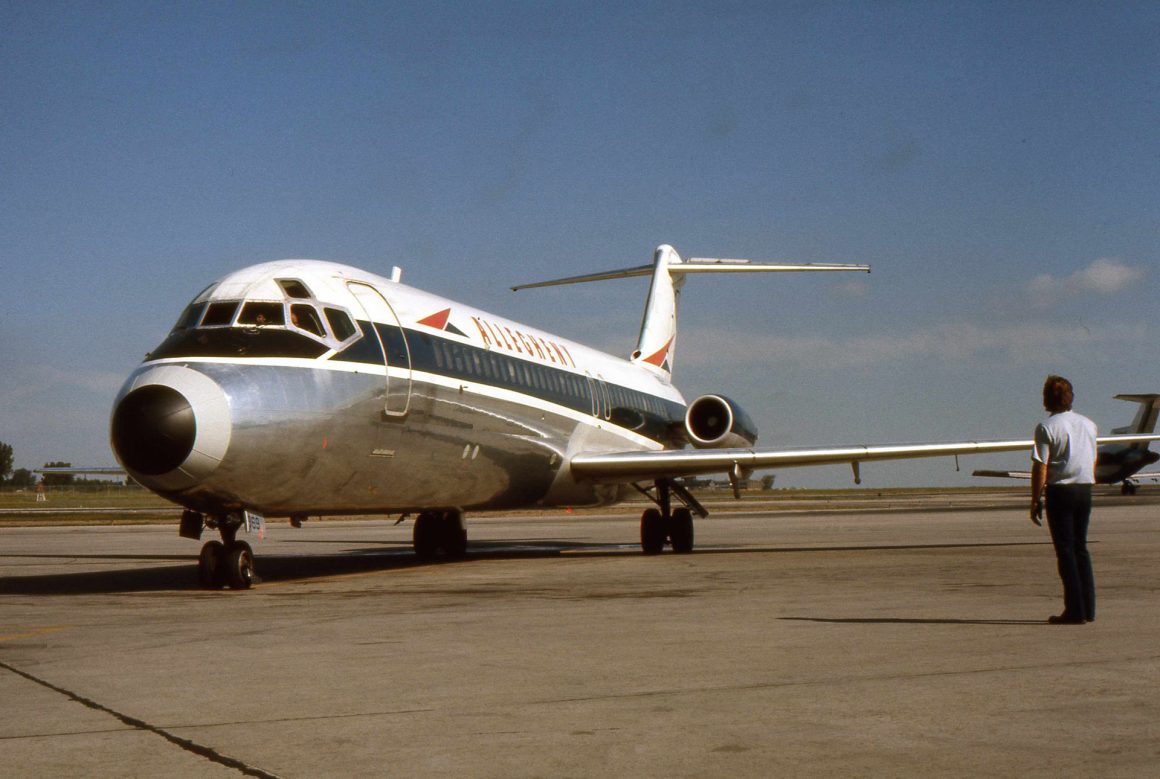
The 1960s and 70s were transformative decades for the airline industry, marked by a wave of mergers, acquisitions, and technological advancements. Allegheny was not immune to these changes. It moved its headquarters from Pittsburgh to Washington, DC, and continued to expand its routes and modernize its fleets, embracing jet aircraft to keep pace with the industry’s rapid evolution.
Following the introduction of Allegheny’s first jet – the Douglas DC-9 – in 1966, the carrier acquired Lake Central Airlines and Mohawk Airlines in 1968 and 1972, respectively.
By the late 1970s, Allegheny Airlines had become a formidable player in the regional airline market, with a network spanning Texas, Arizona, Florida, and Canada. Additionally, Allegheny pioneered the groundbreaking “Allegheny Commuter” service, the first of its kind in the airline industry. However, this growth came at a price, as the airline’s once-stellar service and safety record began to falter, tarnishing its reputation.
For some, Allegheny will forever bear the nickname “Agony Air,” a moniker not given out of spite but rather stemming from a series of unfortunate events that plagued the airline during a critical period. From rising fuel prices, increased competition, and labor disputes to frequent operational meltdowns, mismanagement, and ineffective cost-cutting measures, the nickname “Agony Air” encapsulated the collective frustration of passengers who had experienced the airline’s decline firsthand.
The turning point for Allegheny Airlines and many other carriers at the time came with the Airline Deregulation Act of 1978. This legislation aimed to promote competition and reduce government intervention in the airline industry. While the intention behind the move was to benefit consumers, it created a hyper-competitive market and presented challenging operating conditions for many airlines.
USAir Takes Flight
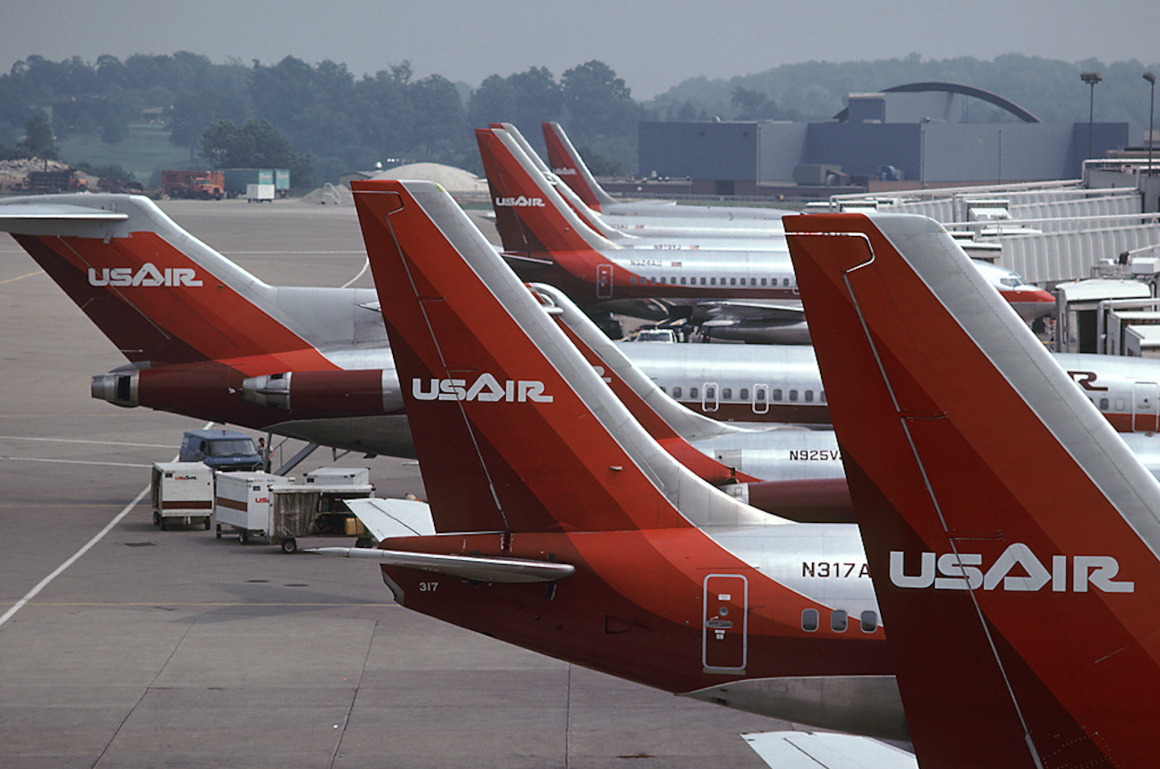
Eager to distance itself from a less-than-flattering moniker and symbolize its transformation from a regional to a national carrier, Allegheny decided it was time for a change.
On 28 October 1979, Allegheny officially became USAir, a name that conveyed a broader, more inclusive vision. This change signaled the airline’s ambition to compete on a national level, challenging industry giants like American and United.
Throughout the 1980s, USAir pursued an aggressive expansion strategy, acquiring several other airlines, including small commuter airlines Pennsylvania Airlines and Suburban Airlines, and larger carriers such as San Diego-based Pacific Southwest Airlines (PSA), and Winston-Salem, NC-based Piedmont Airlines, in 1986 and 1987, respectively. These strategic moves significantly bolstered USAir’s presence on the national stage, allowing it to operate an extensive network of routes across the United States.
Following these mergers, USAir and its commuter arm, USAir Express, positioned itself as one of the world’s largest airlines. With over 5,000 daily flights to more than 180 cities, USAir’s system included the fortress hubs of Greater Pittsburgh International Airport (PIT), Philadelphia International Airport (PHL), and Charlotte Douglas International Airport (CLT).
European service commenced in the early 1990s. The carrier operated transatlantic services to London, Paris, and Frankfurt using a fleet of 12 Boeing 767-200ERs.
The US Airways Era

In 1996, the carrier underwent another rebranding, becoming US Airways. This change reflected the company’s vision of a more streamlined and efficient operation. The new name and logo signaled a fresh start, aligning the airline with a more modern and dynamic image.
The rebranding efforts not only involved cosmetic changes but also signified a strategic shift in the company’s focus towards building a more comprehensive route network and enhancing the passenger experience. With the new identity came a renewed determination to compete on a global scale.
Facing the reality of an aging, fuel-thirsty fleet, US Airways began introducing Airbus aircraft, including A320-series aircraft for short-haul flights and A330-series widebodies for transatlantic flights.
Trouble in the New Century

Headwinds began to blow in the early 2000s. Following a failed merger attempt with United Airlines in 2000, the attacks of 11 September 2001 severely impacted US Airways. While the attacks crippled the entire aviation industry, US Airways suffered particularly devastating losses due to the extended closure of Reagan National Airport (DCA), where it was the dominant carrier, in the aftermath.
The financial strain proved overwhelming for US Airways, leading the company to file for bankruptcy in 2002. A second bankruptcy filing followed in 2004 as they sought a partner to provide financial support.
During this period, US Airways shuttered its longtime hub in Pittsburgh, dealing a debilitating economic blow to the Steel City.
In 2005, US Airways merged with Phoenix-based America West Airlines and moved its headquarters to Tempe, AZ. Although America West was the surviving entity from the merger, the airline chose to retain the US Airways name for its established brand recognition.
Integrating America West’s assets and routes was a complex process, but it ultimately proved successful in creating a more formidable force in the airline industry. The merger with America West solidified US Airways’ position as a significant player in the US aviation market, establishing what was then the world’s fifth-largest airline.
The Curtain Closes on US Airways
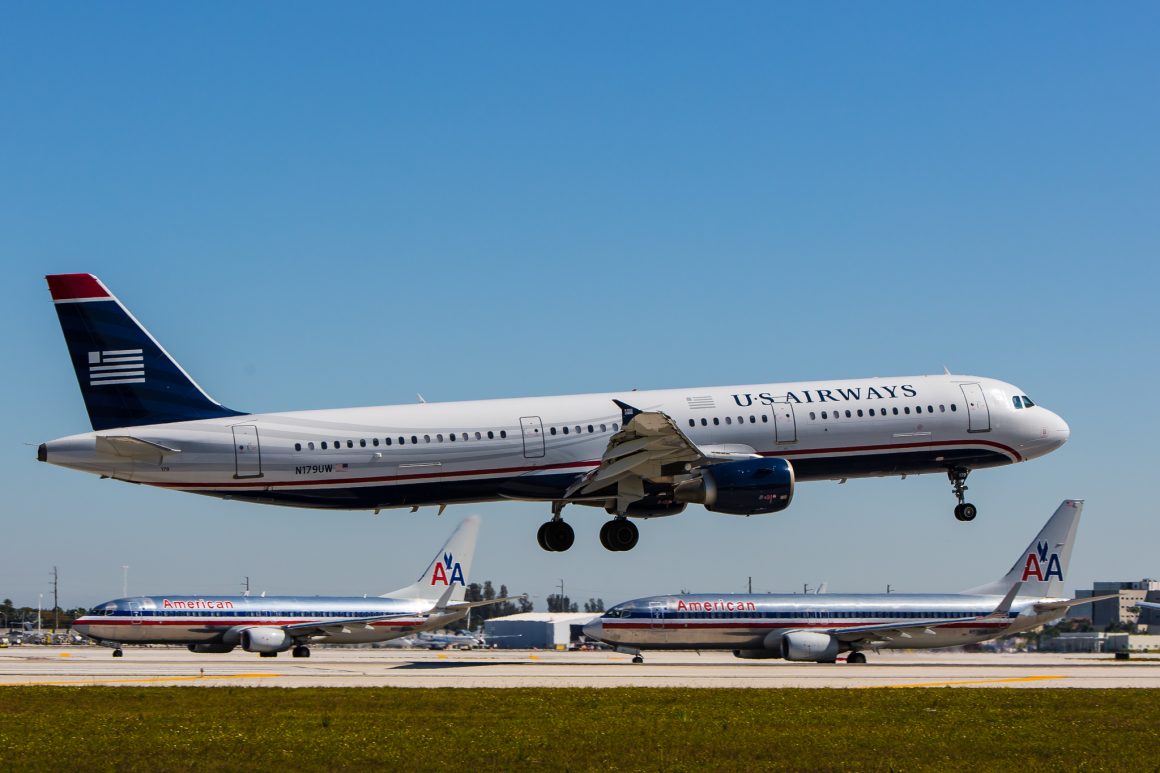
One final merger would occur before the curtain fell on US Airways’ storied history. This time, it was with Fort Worth, Texas-based American Airlines.
This landmark merger, which led to the creation of the world’s largest airline, was complete on 9 December 2013.
Just under two years later, US Airways’ final flight would complete two cross-country trips, marking the end of the US Airways story.
On 16 October 2015, Flight 1939 lifted off from Philadelphia bound for San Francisco, with nostalgic stops in CLT and PHX (curiously – and for some, frustratingly – PIT and DCA were not part of the itinerary). Commanded by Captain Richard Mitchell, the Airbus A321-200 (registration N152UW) touched down on Runway 28L for an on-time arrival into SFO.
The return trip was a redeye flight, arriving at PHL 27 minutes ahead of schedule as American Flight 1939 at 0551 local time on 17 October 2015.
For the 187 passengers aboard US Airways’ final flight, they became an integral part of the closing chapter for one of aviation’s most storied names. From its humble beginnings as a mail carrier in the Ohio Valley to its establishment as a cornerstone of American aviation, the legacy of USAir is a testament to determination, progress, and adaptability.
For those of us who cherished USAir, we pay tribute to the hardworking individuals whose efforts built this incredible airline. Though eight years have passed, the memories will forever remain in our hearts.

